Determination of Crucial Immunogenic Epitopes in Major Peanut Allergy Protein, Ara h2, via Novel Nanoallergen Platform
- PMID: 28638052
- PMCID: PMC5479826
- DOI: 10.1038/s41598-017-04268-6
Determination of Crucial Immunogenic Epitopes in Major Peanut Allergy Protein, Ara h2, via Novel Nanoallergen Platform
Abstract
Current methods for detection and diagnosis of allergies do not provide epitope specific immunogenic information and hence lack critical information that could aid in the prediction of clinical responses. To address this issue, we developed a nanoparticle based platform, called nanoallergens that enable multivalent display of potential allergy epitopes for determining the immunogenicity of each IgE binding epitope. By synthesizing nanoallergens that present various epitopes from the major peanut allergen, Ara h2, we directly determined the immunogenicity of each epitope, alone and in combination with other epitopes, using patient sera. This information provided insights on which epitopes are most critical for physiological responses to Ara h2 and revealed the importance of both high and low affinity epitopes for allergic responses. We anticipate the nanoallergen platform to be used to provide information regarding allergic reactions and therefore potentially aid in more accurate diagnosis and design of personalized treatment options.
Conflict of interest statement
The authors declare that they have no competing interests.
Figures
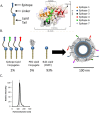

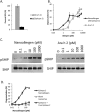

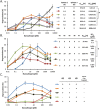
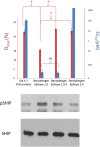
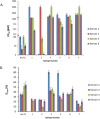
Similar articles
-
IgE versus IgG4 epitopes of the peanut allergen Ara h 1 in patients with severe allergy.Mol Immunol. 2014 Apr;58(2):169-76. doi: 10.1016/j.molimm.2013.11.014. Epub 2013 Dec 22. Mol Immunol. 2014. PMID: 24365751
-
IgE epitopes of intact and digested Ara h 1: a comparative study in humans and rats.Mol Immunol. 2012 Jul;51(3-4):337-46. doi: 10.1016/j.molimm.2012.04.002. Epub 2012 May 1. Mol Immunol. 2012. PMID: 22555070
-
Epitope analysis of Ara h 2 and Ara h 6: characteristic patterns of IgE-binding fingerprints among individuals with similar clinical histories.Clin Exp Allergy. 2015 Feb;45(2):471-84. doi: 10.1111/cea.12407. Clin Exp Allergy. 2015. PMID: 25213872 Free PMC article.
-
Proteomic screening points to the potential importance of Ara h 3 basic subunit in allergenicity of peanut.Inflamm Allergy Drug Targets. 2008 Sep;7(3):163-6. doi: 10.2174/187152808785748182. Inflamm Allergy Drug Targets. 2008. PMID: 18782022 Review.
-
Peanut allergy diagnosis: Moving from basic to more elegant testing.Pediatr Allergy Immunol. 2020 May;31(4):346-357. doi: 10.1111/pai.13215. Epub 2020 Feb 11. Pediatr Allergy Immunol. 2020. PMID: 31945225 Review.
Cited by
-
Designer covalent heterobivalent inhibitors prevent IgE-dependent responses to peanut allergen.Proc Natl Acad Sci U S A. 2019 Apr 30;116(18):8966-8974. doi: 10.1073/pnas.1820417116. Epub 2019 Apr 8. Proc Natl Acad Sci U S A. 2019. PMID: 30962381 Free PMC article.
-
Transcriptional frameshifts contribute to protein allergenicity.J Clin Invest. 2020 Oct 1;130(10):5477-5492. doi: 10.1172/JCI126275. J Clin Invest. 2020. PMID: 32634131 Free PMC article.
-
Use of a Liver-targeting Nanoparticle Platform to Intervene in Peanut-induced anaphylaxis through delivery of an Ara h2 T-cell Epitope.Nano Today. 2022 Feb;42:101370. doi: 10.1016/j.nantod.2021.101370. Epub 2021 Dec 31. Nano Today. 2022. PMID: 36969911 Free PMC article.
-
Probiotics supplementation during pregnancy or infancy on multiple food allergies and gut microbiota: a systematic review and meta-analysis.Nutr Rev. 2025 Feb 1;83(2):e25-e41. doi: 10.1093/nutrit/nuae024. Nutr Rev. 2025. PMID: 38502006 Free PMC article.
-
Peanut allergen inhibition prevents anaphylaxis in a humanized mouse model.Sci Transl Med. 2023 Feb 8;15(682):eadd6373. doi: 10.1126/scitranslmed.add6373. Epub 2023 Feb 8. Sci Transl Med. 2023. PMID: 36753563 Free PMC article.
References
Publication types
MeSH terms
Substances
Grants and funding
LinkOut - more resources
Full Text Sources
Other Literature Sources
Molecular Biology Databases

